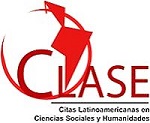La gestión humana ¿Una contradicción entre lo humano y lo estratégico en la empresa?
Palabras clave:
estrategia, recursos humanos, gestión humana, empresaResumen
Una revisión de la literatura especializada en el campo del conocimiento sobre la estrategia en administración muestra que históricamente los aspectos humanos en las empresas han sido, en general, considerados como estratégicos. Sin embargo, los intereses de los autores que se inscriben en esta tradición se han centrado en imaginar cómo construir unos marcos explicativos universales –dirigidos a los responsables de la dirección de las empresas de negocios–, para mejorar su e cacia operativa. Esto les ha conducido a escudriñar en los asuntos funcionales y de estructuración del trabajo organizado, y por eso han terminado por brindar mucha importancia al factor humano en la empresa. Sin embargo, un examen crítico permite inferir que los aspectos humanos terminaron siendo un oxímoron para los estudiosos de la estrategia: “lo humano” es, a la vez, el elemento estratégico y el elemento ausente.
Métricas de artículo
Resumen: 2463 PDF: 2545Citas
ALLEN, Mathew & WRIGHT, Patrick. (2007). “Strategic Management and HRM”. In: P. Boxall, J. Purcell y P. Wright (Eds.). The Oxford Handbook of Human Resource Management (pp. 88-107). Oxford: Oxford University Press.
ANDREWS, Kenneth. (1971).The concept of corporate strategy. Homewood, III: DowJones Irwin.
ANSOFF, Igor. (1991). “Critique of Henry Mintzberg’s The Design School: Reconstructing the Basic Premises of Strategic Management”. Strategic Management Journal, 12(6), 449-461.
ANTÚNEZ, Ricardo. (1999). Os sentidos do trabalho. Sao Paulo: Boitempo
BARLEY, Stephen & KUNDA, Gideon. (1992). “Design and Devotion: Surges of Rational and Normative Ideologies of Control in Managerial Discourse”. Administrative Science Quarterly, 37(3), 363-399.
BARNARD, Chester. (1968).The Functions of the Executive. Cambridge: Harvard University Press.
BÉDARD, Renée. (1996). “En el corazón del o cio de dirigente: El ser y los valores”. Cuadernos de Administración, 23, 119-127.
BELENZON, Sharon & SCHANKERMAN, Mark. (2015). “Motivation and Sorting of Human Capital in Open Innovation”. Strategic Management Journal, 36(6), 795-820.
BERMÚDEZ, Héctor. (2014). “Perspectivas contemporáneas de la administración estratégica de recursos humanos”. Cuadernos de administración, 31(52), 94-104.
BURNS, Tom & STALKER, George. (1961). The Management of Innovation. Londres: Tavistock.
CALDERÓN, Gregorio, NARANJO, Julia y ÁLVAREZ, Claudia. (2010). “Gestión humana en la empresa colombiana, sus características, retos y aportes: Una aproximación a un aporte integral”. Cuadernos de Administración, 23 (41), 13-36.
CARDONA, Raúl. (2011). “Estrategia basada en los recursos y capacidades. Criterios de evaluación y el proceso de desarrollo”. Forum Doctoral, 4, 113-147.
CHANDLER, Alfred. (1990). Strategy and Structure: Chapters in the History of the American Industrial Enterprise. Cambridge: The MIT Press.
CHANLAT, Alain. (1995). “Carta a Richard Déry: el occidente enfermo de sus dirigentes”. Cuadernos de Administración, 20, 13-41.
CHANLAT, Alain y BÉDARD, Renée. (1990). “La gestion, une a aire de parole”. In: J-F. Chanlat (dir.), L’individu dans l’organisation. Les dimensions oubliées (pp. 79-99). Québec: Les presses de l’Université Laval.
COLLINGS, David & MELLAHI, Kamel. (2009) “Strategic Talent Management: A review and research agenda”. Human Resource Management Review, 19(4), 304-313.
COMMONS, John. (1919). Industrial Goodwill. New York: McGraw-Hill.
DEJOURS, Christophe. (1998). El factor humano. Buenos Aires: Lumen.
DEJOURS, Christophe. (2006). “Aliénation et clinique du travail”. Actuel Marx, 39(1), 123-144.
DE LA GARZA, Enrique. (2011). Repensar el trabajo: Hacia un concepto ampliado de trabajo. México: Anthropos.
DE LOS REYES, Gaston. (2011). “Introduction (as presented) to The Concept of Strategy 40 Years Later: What Happened to Andrew’s Vision for Business Policy?” Recuperado 31/05/2015 de: le:///C:/Users/admin/Downloads/Concept%20of%20Strategy%20 40%20Years%20Later%20Introduction_1.pdf
DESMAREZ, Pierre. (1986). La sociologie industrielle aux États-Unis. París: Armand Colin.
GAMBARDELLA, Alfonso, PANICO, Claudio & VALENTINI, Giovanni. (2015). “Strategic Incentives to Human Capital”. Strategic Management Journal, 36(1), 37-52.
GARCÍA, Natalia, MARTÍN, Fernando y SÁNCHEZ, Gonzalo. (2013). “Una aproximación teórica a la valoración del doble ajuste en el diseño de la estrategia de recursos humanos”. Investigaciones Europeas de Dirección y Economía de la Empresa, 19(2), 112- 119.
GAULEJAC, Vincent de. (2005). La société malade de la gestion. París: Seuil.
GAULEJAC, Vincent de. (2011). “Management, les maux pour le dire”. Projet, 323(4), 61-68.
HAMEL, Gary & PRAHALAD, Coimbatore. (1989). “Strategic Intent”. Harvard Business Review, 67(3), 63-76.
HOPENHAYN, Martin. (2006). Repensar el trabajo: Historia, profusión y perspectivas de un concepto. Buenos Aires: Norma.
KAUFMAN, Bruce. (2001). “Human resources and industrial relations. Commonalities and di erences”. Human Resource Management Review, 11(4), 339-374.
KAUFMAN, Bruce. (2007). “The Development of HRM in Historical and International Perspective”. In: P. Boxall, J. Purcell & P. Wright (Eds.). The Oxford Handbook of Human Resource Management (pp. 19-47). Oxford: Oxford University Press.
KAUFMAN, Bruce. (2012). “Strategic Human Resource Management in the United States: A Failing Grade After 30 Years?” Academy of Management Perspectives, 26(2), 12-36.
KENNETH, Hatten, SCHENDEL, Dan & COOPER, Arnold. (1978). “A Strategic Model of the U.S. Brewing Industry: 1952-1971”. The Academy of Management Journal, 21(4), 592-610.
LAWRENCE, Paul & LORSCH, Jay. (1967). Organization and Environment: Managing Di erentiation and Integration. Cambridge, MA: Harvard Graduate School of Business Administration.
LEWIS, Robert & HECKMAN, Robert. (2006) “Talent Management: A critical review”. Human Resource Management Review, 16, (2), 139-154.
LIANG, Xiaoya, MARLER, Janet & CUI, Zhiyu. (2012). “Strategic Human Resource Management in China: East Meets West”. Academy of Management Perspectives, 26(2), 55-70).
MARLER, Janet. (2012). “Strategic Human Resource Management in Context: A Historical and Global Perspective”. Academy of Management Perspectives, 26(2), 6-11.
MARTÍN, Fernando, ROMERO, Pedro & SÁNCHEZ, Gonzalo. (2005). “Strategic human resource management: integrating the universalistic, contingent, con gurational and contextual perspectives”. International Journal of Resource Management, 16(5), 633-659.
MARTUCCELLI, Danilo. (2006). “Derrière les rhétoriques managériales”. Vacarme, 36. Recuperado 25/05/2012 de: http://www.vacarme.org/article676.html
MAYO, Elton. (1966). The human problems of an Industrial Civilization. New York: The Viking Press.
MCGREGOR, Douglas. (1976). La dimension humaine de l’entreprise. París: GauthierVillars.
MILLER, Danny, XU, Xiaowei & MEHROTRA, Vikas. (2015). “When is Human Capital a Valuable Resource? The performance E ects of Ivy League Selection Among Celebrated CEOs”. Strategic Management Journal, 36(6), 930-944.
MINTZBERG, Henry. (1990). “The Design School: Reconsidering the Basic Premises of Strategic Management”. Strategic Management Journal, 11(3), 171-195.
MINTZBERG, Henry. (1994). “The Rise and Fall of Strategic Planning”. Harvard Business Review, 72(1), 107-114.
MINTZBERG, Henry, AHLSTRAND, Bruce & LAMPEL, Joseph. (1998). Strategy Safari: A Guided Tour Through The Wilds of Strategic Management. New York: The Free Press.
MONTAIGNE, Michel de. (1994). “Du repentir”. In: M. Montaigne, Les Essais, choix de textes présentés annotés et commentés par Denis A. Canal (pp. 177-188). París: Larousse.
MONTGOMERY, James. (1832). The Theory and Practice of Cotton Spinning; or Carding and Spinning Master’s Assistant. Glasgow: John Niven.
MORRIS, Jonathan. (2014). “Method in the Madness: Towards Developing a Matrix for Comparison of Conceptual Models of Organizational Culture”. Strategic Management Review, 8(1), 1-16.
NEWMAN, William. (1963). Administrative Action: The Techniques of Organization and Management. Englewood Cli s, NJ: Prentice-Hall.
OWEN, Robert. (1817). A New View of Society; or Essays on the Formation of the Human Character. Glencoe: The Free Press.
PÉREZ, Rafael. (2014). “La estrategia como campo de estudio. ¿Tenemos ya un nuevo paradigma?”. Revista Mediterránea de Comunicación, 5(2), 9-31.
PORTER, Michael. (1979). “How Competitive Forces Shape Strategy”. Harvard Business Review, 57(2), 137-145.
PORTER, Michael. (2008) Ventaja Competitiva: creación y sostenimiento de un desempeño superior. México: Editorial Patria.
PORTER, Michael & KRAMER, Mark. (2006). “Strategy & Society. The Link Between Competitive Advantage and Corporate Social Responsibility”. Harvard Business Review, Recuperado 31/05/2015 de: http://www.stockholmresilience.org/download/18.aeea 46911a31274279800090883/1381790092816/susannesweet.pdf
PRAHALAD, Coimbatore & HAMEL, Gary. (1994). “Strategy as a Field of Study: Why Search for a New Paradigm?”. Strategic Management Journal, 15 (Special Issue), 5-16.
RIVERA, Hugo y MALAVER, Marleny. (2011). “¿Qué es la estrategia?”. Documentos de investigación, Facultad de Administración de la Universidad del Rosario, (99), 5-26.
ROETHLISBERGER, Fritz & DICKSON, William. (1976). Management and the Worker. Cambridge (EU): Harvard University Press.
RUMELT, Richard, SCHENDEL, Dan & TEECE, David. (1994). “Fundamental Issues Strategy”. In: R. Rumelt, D. Schendel & D. Teece (ed.), Fundamental Issues in Strategy: A Research Agenda (pp. 9-47). Boston: Harvard Business School Press.
SÁNCHEZ, Karem. (2000). “Por una visión integral de las organizaciones contemporáneas”. In: H. Galvis (comp.), De lo humano organizacional (181-199). Cali: Universidad del Valle, Facultad de Ciencias de la Administración.
SCHENDEL, Dan. (1994). “Introduction to the Summer 1994 Special Issue –Strategy: Search for New Paradigms”. Strategic Management Journal, 15 (Special Issue), 1-4.
SENNETT, Richard. (2006). La culture du nouveau capitalisme. París: Albin Michel.
SNOW, Charles & HAMBRICK, Donald. (1980). “Measuring Organizational Strategies: Some Theoretical and Methodological Problems”. The Academy of Management Review, 5(4), 527-538.
SOARES, Angelo. (2014). “O preço de um sorriso: as emoções no trabalho, desa os para a saúde das trabalhadoras e dos trabalhadores”. In: J. Andrade & M. Matsuo (org.), O trabalho emocional e o trabalho de cuidado (pp. 13-25). São Paulo: Fundacentro.
STRAUSS, George. (2001). “HRM in the USA: Correcting some British impressions”. International Journal of Human Resource Management, 12(6), 873-897.
SUÁREZ, Jesús e IBARRA, Santiago. (2002). “La teoría de los recursos y las capacidades. Un enfoque actual en la estrategia empresarial”. Anales de estudios económicos y empresariales, 15, 63-89.
TAYLOR, Frederick. (1919). The Principles of Scienti c Management. New York: Harper & Brothers Publishers.
TEECE, David, PISANO, Gary & SHUEN, Amy. (1997). “Dynamic Capabilities and Strategic Management”. Strategic Management Review, 18 (7), 509-533.
WERNERFELT, Birger. (1984). “A Resource-Based View of the Firm”. Strategic Management Journal, 5 (2), 171-180.
WHITTINGTON, Richard. (1993). What is Strategy and Does It Matter? London: Routledge.
WOODWARD, Joan. (1965). Industrial Organization: Theory and Practice. Londres: Oxford University Press.





















